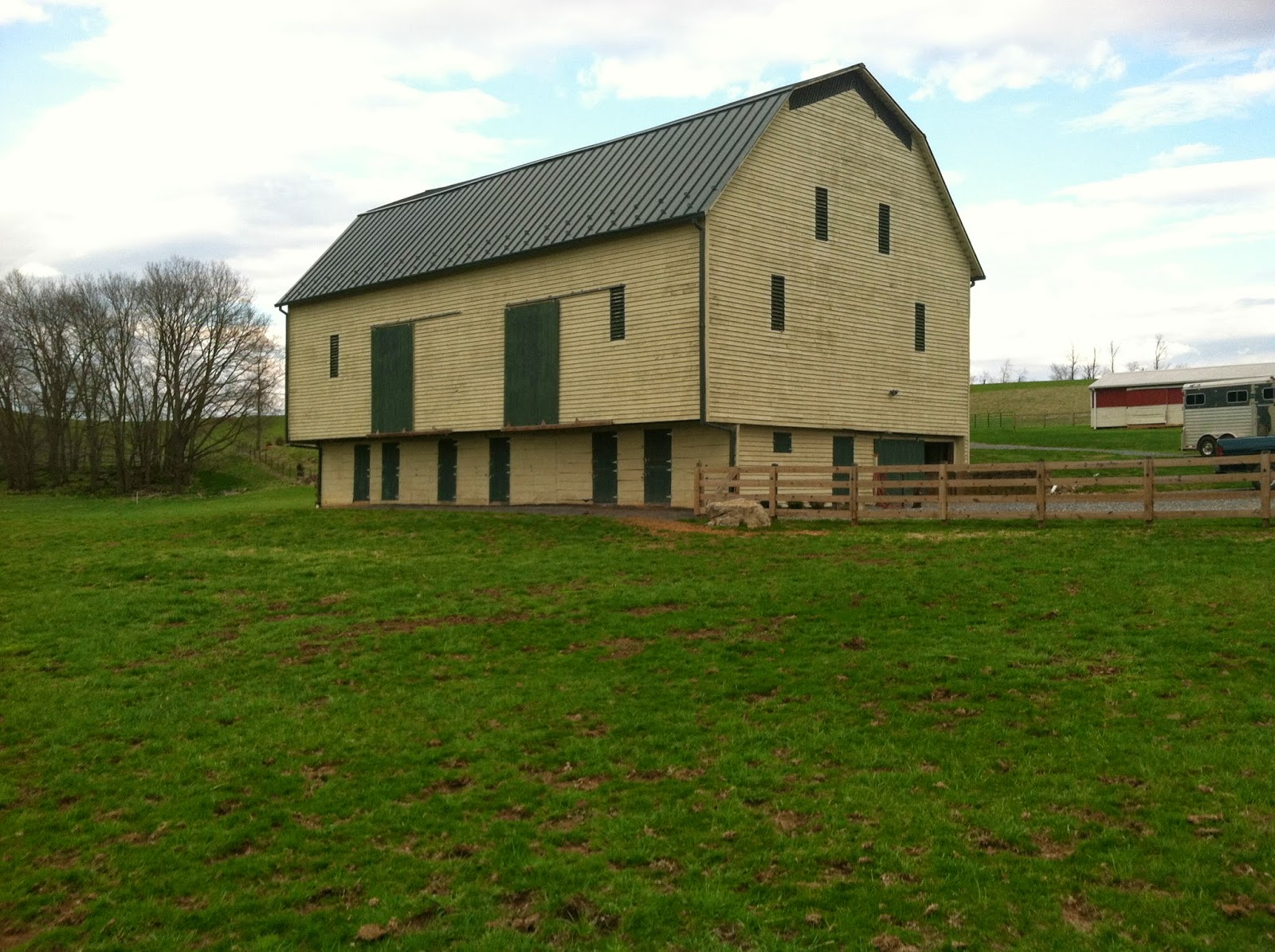My barn was built in the very late 1800's. Most of the barns in the Shenandoah Valley were burned during the Civil War. Many owners rebuilt them on the same foundations so most are not terribly old when compare to many of the old homes in the area. Because they can be so large, it's a very expensive endeavor to save them. My barn took 7000 linear feet of wood and the roof is made of galvanized steel. I hope this barn will still be here in another 200 years. That's my barn below, pre-restoration. Yes, what were we thinking?
Frequently, the structures had extended or cantilevered upper floors; this provided additional protection from the elements to the livestock. The overhang sometimes had to be propped up with additional columns or posts. The Park Service says in the earliest examples of bank barns, the narrow-end side walls are often stone or brick, with ventilation openings to ensure heat produced by the curing hay would not start a fire.
In Augusta County, not far from the farm is a famous bank barn, the Henry Mish Barn. It is located near Middlebrook, VA and was built about 1849, and measures 50 feet by 100 feet. The ends of the barn feature decorative brick lattice vents in lozenge patterns. Associated with the brick barn are the contributing Mish House and two related outbuildings. The barn was built for Henry Mish, a native of the Pennsylvania Amish Country of who settled in southwestern Augusta County in 1839.
It was listed on the National Register of Historic Places in 1983.
Here are a few more photos of some old bank barns. They are more plentiful in areas like Pennsylvania than in Virginia.
According to John Hay, a Lancaster, PA-based barn lover, the American barn is an endangered species. In 1920 it is estimated that there were more than 6.5 million barns in the US. Now we have less than half that number. The old structures have been victims of decay, fire, collapse, bulldozers, and suburban construction.
In 1990, High began The Barn Saver Project. It’s mission is to rescue the buildings he’d always hated destroying. His first project was an 1880s vintage bank barn. He takes the old structures apart, board by board. He saves the flooring, siding, windows, doors, roofing, beams, joists, hardware, and even the contents inside.
High’s Barn Saver Project also strives to lessen the negative environmental effects of deconstruction. He uses mostly crowbars, hammers, and his hands so he is not only saving barns the old-fashioned way with elbow grease—but by saving these barns, he’s also conserving landfill space.
In the 10 years High’s Barn Saver Project has been in operation he has saved and preserved over 200 barns and houses.
Last, but not least…there is Barn Again!. This is a national program that provides information to help owners of historic barns rehabilitate them and helps to put the structures back to productive use. Here is an interesting website for barn lovers: www.barnagain.org.













I don't think there are any stone barns in the Shenandoah Valley. Can you tell me where these are located?
ReplyDelete